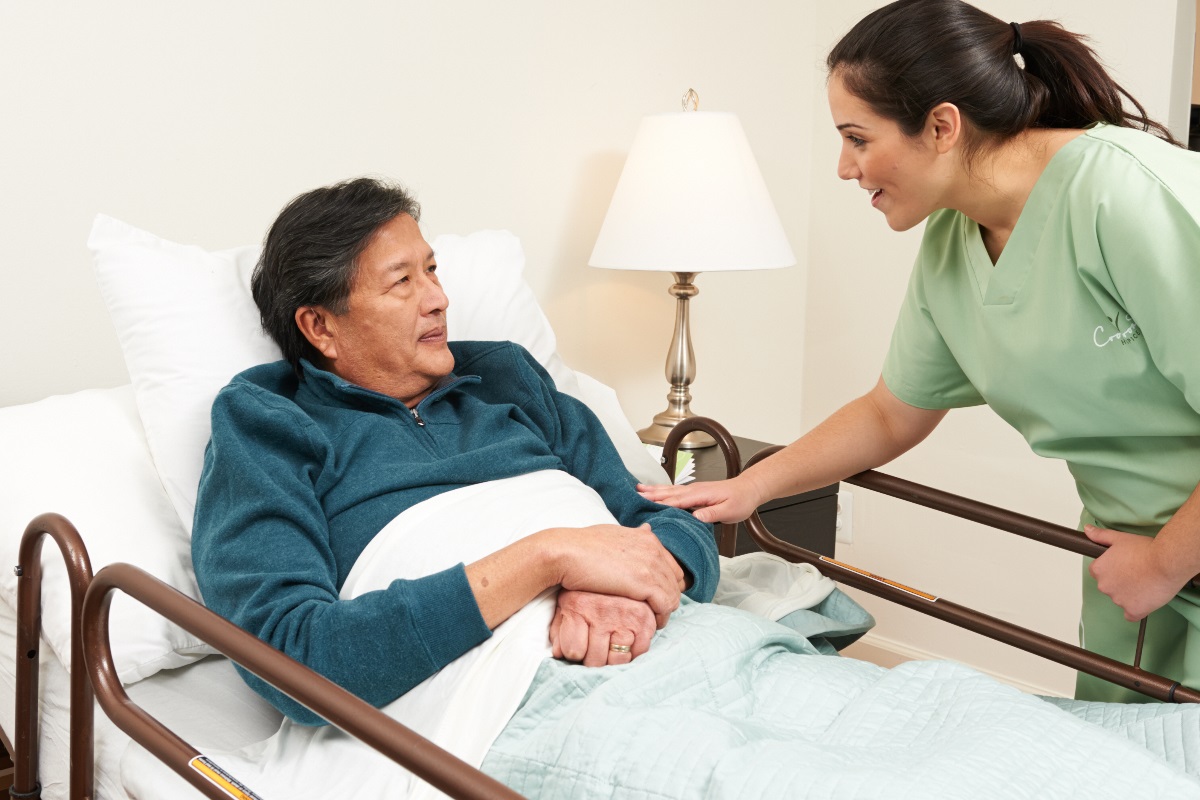Setting Up Your Home for Hospice and Palliative Care

 There are many life-limiting diseases that may cause a loved one to seek the help and support of hospice or palliative care. From congestive heart failure to COPD, Alzheimer’s, cancer, and beyond, each disease and patient requires a very specific and custom care plan.
There are many life-limiting diseases that may cause a loved one to seek the help and support of hospice or palliative care. From congestive heart failure to COPD, Alzheimer’s, cancer, and beyond, each disease and patient requires a very specific and custom care plan.
With such, a team of nurses, home health aides, chaplains, social workers, and volunteers work together to make the patient as comfortable as possible in his or her own home. But before the hospice or palliative services begin, it’s crucial to carefully and strategically set up the home to ensure the transition is a smooth and successful one for the patient.
“It is important to ensure the patient is as comfortable and safe as possible while receiving care in the home,” says Dyanna Johnston, a nurse practitioner with Crossroads Hospice and Palliative Care in Oklahoma City. “Our goal is to keep the patient home and out of the hospital.”
In order to meet this goal, certain changes and modifications must be made in the patient’s home so that the team of hospice and palliative care workers can effectively provide care in a safe and workable space.
Set up the bedroom
Many patients in hospice or palliative care have limited mobility and, therefore, may have a difficult time getting in and out of a standard bed. In scenarios like this, patients can greatly benefit from having a hospital bed, suggests Johnston. These beds, which are approximately the size of a twin bed, make it significantly safer and easier for the patient to receive care. Crossroads provides these beds as well as other medical equipment and supplies needed to manage a patient’s primary diagnosis – such as commodes, wheelchairs, incontinence supplies, and bandages – all at no cost to the patient or their family.
When deciding where to place a hospital bed, keep in mind that certain medical equipment, like oxygen or a bedside commode, may need to be placed near the bed. If the bedroom is not large enough to meet these requirements, consider placing the hospital bed in a larger room to meet these needs.
Remove obstacles and hazards
The home should be set up so the patient and the caregivers can move about freely. Keep in mind that members from the care team will be in frequent contact with the patient, so the home environment should be organized in a way that is conducive to providing care.
“The area that the patient needs to have access to should have safety as the number one consideration,” says Johnston.
Most patients are at risk for falls, so all obstacles and tripping hazards – such as unnecessary furniture or rugs – should be removed from the hallways. Consider installing night-lights and lamps, as these help keep the home well lit so everyone can safely and easily move around. If the patient’s home has multiple stories, try adding rails alongside the stairs to help them maintain their balance.
Prepare the bathroom
Most falls occur in the bathroom, so be sure to pay extra attention to this area. Non-slip bath mats can help prevent slipping, as can grab bars or handrails. Raised toilet seats and shower chairs can keep the bathroom safe and accessible to the patient. Oftentimes, patients may need to bring special medical equipment into the bathroom, so be sure to remove any barriers to ensure there is enough room for these items.
Organize a care folder
There will be several members from the care team – such as the case manager, home health aides, and counselors – coming in and out of the patient’s home throughout hospice or palliative care, so it’s important to have an organized patient care folder. The folder should include details of all medical records, medications, doctors, and emergency contacts. If the patient has any specific needs or activities that should be a part of their daily routine, make a point to include these as well.
Keep the comfort items
The main focus of hospice and palliative care is comfort, so when setting up your home for hospice and palliative care, be sure to keep any special or meaningful items, such as a favorite blanket or chair for watching TV or reading a book. While it’s necessary for the environment to be conducive to providing care, it should still provide patients with an overwhelming sense of normalcy and peace.
Remember – the goal of hospice and palliative care is to keep the patient as comfortable as possible in his or her own home. Each member of the care team will work with the patient to determine their specific needs and concerns so that they can provide the greatest relief possible.
To learn more about how to set up your home for hospice and palliative care, visit our website or give our care team a call at (888) 564-3405.
If you found this information helpful, please share it with your network and community.
Copyright © 2018 Crossroads Hospice & Palliative Care. All rights reserved.




